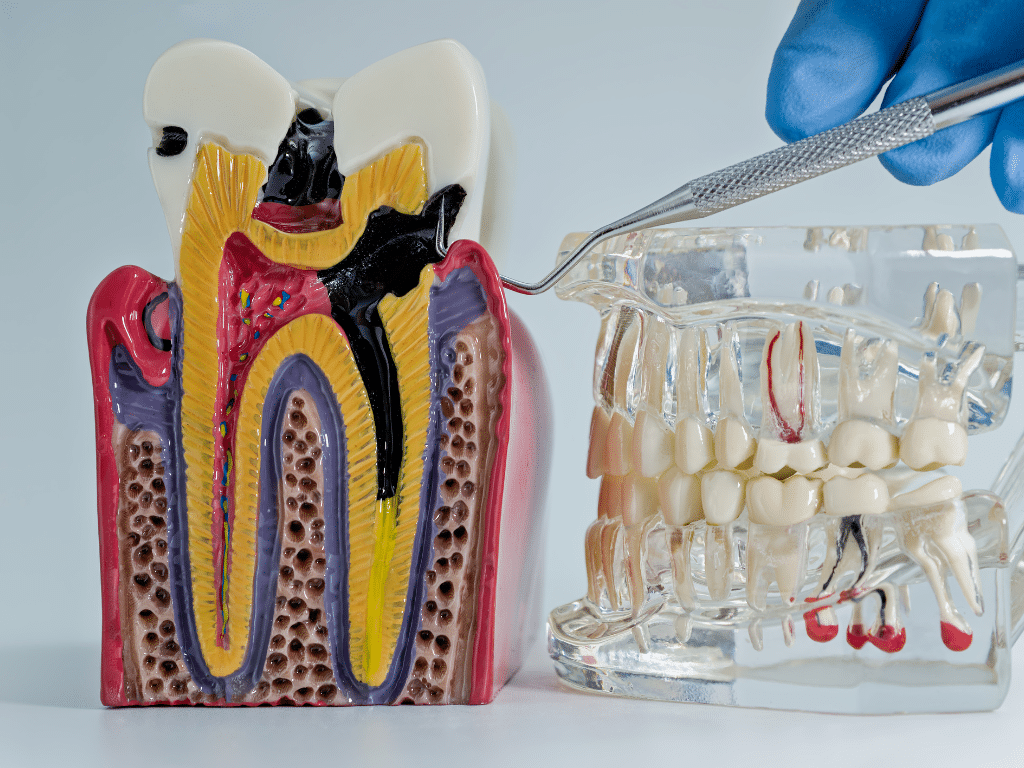Your Brightest Smile Starts at Home.
The foundation of a truly radiant smile isn’t built on a single treatment, but on the consistent, deliberate actions we take every day. While professional cosmetic procedures offer remarkable enhancements, their brilliance and longevity are fundamentally supported by an impeccable at-home oral hygiene routine. This article is dedicated to the residents of Caledonia, providing a comprehensive guide to the daily, weekly, and yearly habits that not only safeguard oral health but actively contribute to keeping your smile naturally bright, white, and full of life between professional visits.
Introduction
In the heart of Caledonia, a bright, confident smile is more than just an aesthetic goal; it’s a reflection of health and well-being. We all desire a smile that lights up a room, but many believe this is only achievable through expensive and frequent cosmetic treatments. The truth, however, is that the most impactful work in maintaining a white smile happens in your own bathroom. A perfect oral hygiene routine is your first and most powerful line of defence against stains, discolouration, and decay. It’s the framework that supports all other dental care. At Dentistry at the Plex, we believe in empowering our patients with knowledge. While we offer advanced solutions like professional Teeth Whitening Kits to elevate your smile, we know that the secret to lasting results lies in your daily commitment. This guide will break down the ten essential components of the perfect oral hygiene routine, providing detailed, practical steps to help you protect your investment in your smile and keep it shining brightly for years to come.
1. Mastering the Art of Brushing: Technique Over Force
Brushing your teeth is the cornerstone of oral hygiene, but simply going through the motions isn’t enough. Proper technique is paramount. Most dental professionals recommend the Bass or modified Bass technique. This involves positioning your toothbrush at a 45-degree angle to the gum line, where the teeth and gums meet. Use short, gentle, circular or back-and-forth strokes to clean the outer and inner surfaces of your teeth. Avoid aggressive, sawing motions, which can damage enamel and cause gum recession. The ideal toothbrush has soft bristles, as medium or hard bristles can be too abrasive. Whether you choose a manual or an electric toothbrush is a personal preference, though many find that the oscillating or sonic vibrations of an electric brush provide a more thorough clean. Most importantly, you must brush for a full two minutes, twice a day. Use a timer to ensure you’re giving each quadrant of your mouth—upper right, upper left, lower right, lower left—the 30 seconds of attention it deserves.
2. Choosing the Right Toothpaste for Your Goals
The toothpaste aisle can be overwhelming, but choosing the right one is simpler than it seems. The most critical ingredient to look for is fluoride, a naturally occurring mineral proven to strengthen tooth enamel and make it more resistant to acid attacks from plaque bacteria and sugars. For maintaining a white smile, a whitening toothpaste can be a helpful adjunct. These toothpastes typically work in one of two ways: they either contain mild abrasives that gently polish the teeth to remove surface stains, or they feature chemical agents like hydrogen peroxide or carbamide peroxide that help break down stains. It’s important to choose one with the Canadian Dental Association (CDA) Seal of Approval to ensure it is safe for your enamel. If you experience sensitivity, consider a toothpaste formulated for sensitive teeth, which contains ingredients like potassium nitrate or stannous fluoride to block pain signals.
3. The Non-Negotiable Step: Daily Flossing or Interdental Cleaning
If you are only brushing, you are only cleaning about 60% of your tooth surfaces. The tight spaces between your teeth are a primary breeding ground for plaque, a sticky film of bacteria that can lead to cavities, gum disease, and discolouration. Flossing once a day is non-negotiable for removing this hidden plaque. To floss correctly, use about 18 inches of floss, wrapping most of it around one middle finger and a small amount around the other. Gently guide the floss between your teeth using a rubbing motion. When it reaches the gum line, curve it into a C-shape against one tooth and slide it into the space between the gum and the tooth until you feel gentle resistance. Scrape the side of the tooth, moving the floss away from the gum. Repeat on the adjacent tooth. For those who find traditional floss difficult, options like floss picks, interdental brushes, or water flossers (which use a targeted stream of water) are excellent and effective alternatives.
4. Beyond the Teeth: Don’t Neglect Your Tongue
Your tongue’s rough surface is covered in tiny papillae that can easily trap food particles and bacteria. This buildup is a leading cause of halitosis (bad breath) and can also contribute to a duller appearance of your smile as the bacteria can transfer to your teeth. Cleaning your tongue daily is a quick and easy step with significant benefits. You can do this by gently brushing your tongue from back to front with your toothbrush after you’ve finished brushing your teeth. However, for a more effective clean, consider using a dedicated tongue scraper. These tools are specifically designed to skim the layer of buildup off the surface of the tongue more efficiently than a toothbrush. This simple 15-second addition to your routine will result in fresher breath and a cleaner, healthier oral environment.
5. The Finishing Touch: Using an Antimicrobial Mouthwash
Think of mouthwash as the final rinse that accesses areas brushing and flossing might have missed. It is a supplement to, not a replacement for, mechanical cleaning. An effective oral hygiene routine can be enhanced by using a therapeutic, antimicrobial mouthwash. These rinses contain active ingredients that help to kill bacteria, reduce plaque formation, prevent or reduce gingivitis (inflammation of the gums), and freshen breath. Look for products with the CDA Seal to ensure they have been proven effective. Swish vigorously for 30-60 seconds as directed on the label, and for best results, wait at least 30 minutes after rinsing before eating or drinking to allow the active ingredients to work. Using a mouthwash can provide an extra layer of protection, helping to keep your entire mouth clean and your smile looking its best.
6. Hydration is Key: Drink Plenty of Water Throughout the Day
One of the simplest yet most effective habits for a bright smile is drinking plenty of water. Water is nature’s rinsing agent. Sipping water throughout the day, especially after meals and snacks, helps to wash away food debris and neutralize the harmful acids produced by plaque bacteria. This prevents food particles and staining liquids from sitting on your teeth for extended periods. Furthermore, staying hydrated is crucial for producing saliva. Saliva is your mouth’s natural defence system; it contains minerals like calcium and phosphate that help to remineralize and strengthen tooth enamel, and it has enzymes that begin the process of digestion and help control the bacterial population in your mouth. A dry mouth is more susceptible to decay and staining, so keeping a water bottle handy is an easy win for your oral health.
7. Be Mindful of Staining Foods and Drinks
While you don’t need to completely eliminate your favourite foods and drinks, being mindful of common culprits of tooth staining is crucial for maintaining a white smile. Darkly pigmented beverages like coffee, black tea, red wine, and colas are notorious for causing surface stains. The same goes for certain foods, such as blueberries, blackberries, pomegranates, soy sauce, and curries. You can mitigate their staining effects with a few simple strategies. Try drinking dark beverages through a straw to minimize their contact with your front teeth. After consuming a staining food or drink, rinse your mouth thoroughly with water. Wait at least 30 minutes before brushing, as some acidic foods can temporarily soften your enamel, and brushing immediately can cause wear.
8. The Importance of Regular Professional Cleanings
No matter how diligent your at-home routine is, you cannot replicate the deep clean provided by a dental hygienist. Plaque that is not removed within 24-48 hours can harden into tartar (also known as calculus), a cement-like substance that can only be removed with professional instruments. During a professional cleaning in Caledonia at Dentistry at the Plex, a hygienist will use specialized tools to meticulously remove tartar from above and below the gum line. They will finish with a polish that removes surface stains and leaves your teeth feeling smooth and looking bright. These regular appointments, typically recommended every six months, are essential for preventing gum disease and are a key part of keeping your smile white and healthy. They also provide your dentist with an opportunity to catch any potential issues early.
9. Elevate Your Results with Professional Teeth Whitening
Once you have established a perfect oral hygiene routine, you may want to give your smile an extra boost of brilliance. This is where professional whitening solutions come in. Professional-grade treatments are significantly more effective and safer than over-the-counter options. For instance, Dentistry at the Plex offers professional Teeth Whitening Kits that you can use in the convenience of your own home. These kits include custom-made whitening trays that are fabricated from a model of your teeth. This bespoke fit ensures that the professional-strength whitening gel is applied evenly across every tooth surface and prevents the gel from leaking onto your gums, which can cause irritation. This customized, dentist-supervised approach delivers consistent, beautiful, and longer-lasting results than any one-size-fits-all product from a store.
10. Protect Your Smile from Damage and Wear
A bright, white smile is also a strong, intact smile. Two common threats to your teeth are nighttime grinding (bruxism) and sports-related injuries. Bruxism involves clenching or grinding your teeth, often subconsciously during sleep. Over time, this immense pressure can wear down your enamel, making your teeth appear dull, yellow (as the underlying dentin shows through), and prone to chipping or cracking. If you suspect you grind your teeth, a custom-fitted night guard from your dentist can protect them from this damage. Similarly, if you or your children participate in contact sports, a custom-fitted sports mouthguard is essential. It provides superior protection against chips, fractures, or even tooth loss compared to boil-and-bite guards from a store. Protecting your teeth from physical damage is a crucial, often overlooked, part of maintaining a perfect smile.
Conclusion
Achieving and maintaining a bright, white smile in Caledonia is a partnership. It’s a collaboration between your daily dedication and the professional guidance of your dental team. The ten steps outlined in this guide form a powerful, comprehensive routine that puts you in control of your oral health and the brilliance of your smile. By mastering your brushing and flossing, making smart dietary choices, and committing to regular professional care, you build a resilient foundation for lasting oral wellness. And when you’re ready to take your smile to the next level, professional solutions are available to help you safely and effectively achieve your goals. A beautiful smile is a journey, not a destination, and it begins with the simple, consistent choices you make every day.
Let Us Be Your Partner in Achieving a Brighter Smile!
Whether you need to schedule a professional cleaning or are interested in learning more about our professional Teeth Whitening Kits, our team at Dentistry at the Plex is here to help.
- Name: Dentistry AT The Plex
- Address: 370 Argyle St S, Caledonia, ON N3W 2N2
- Phone: 289.960.0730
- Email: Send an email to [email protected]
- Website: Visit their website at www.dentistryattheplex.com.




